Last updated on April 18, 2024
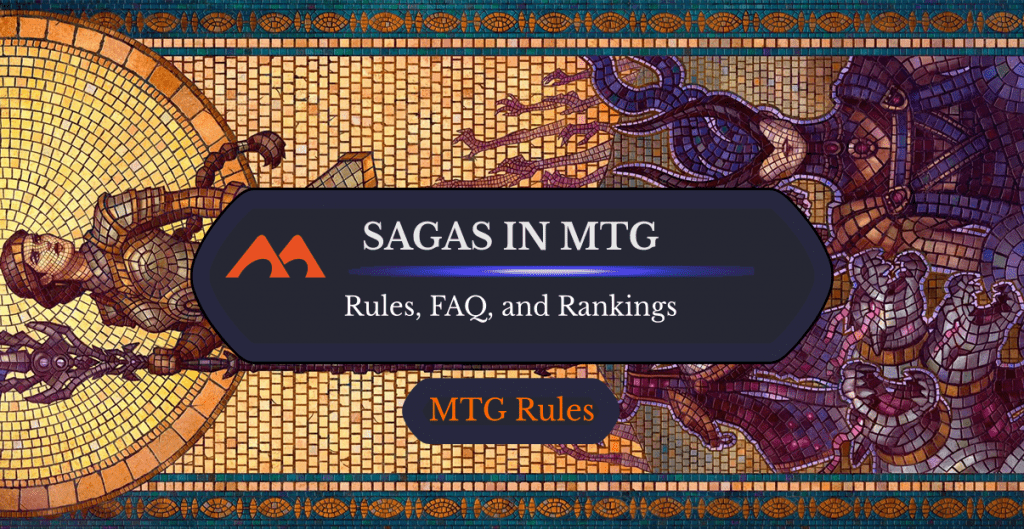
Elspeth Conquers Death | Illustration by Ryan Yee
Magic lore is a fundamental part of the game. There are players out there who are more into the story elements of Magic than the actual cards themselves. I imagine those people are quite fond of sagas, a card type that perfectly blends game mechanics and story beats together in a fun and engaging way.
Despite being relatively new in Magic’s 30+ year timeline, sagas were revolutionary when they were first introduced to the game, and they’ve been iterated on many times, becoming a core element of any MTG set with historical significance behind it. Somewhat ironically, we’ll be starting at the first chapter for sagas and working our way through their deep but condensed history in Magic.
All About Sagas
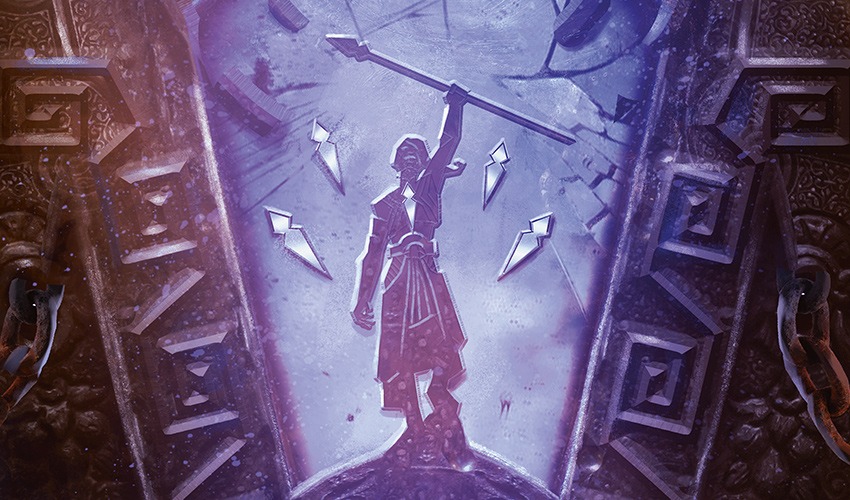
Niko Defies Destiny | Illustration by Bastien L. Deharme
“Saga” is an enchantment subtype. Each saga has a vertical card frame with a specified number of chapters and corresponding chapter abilities on the left-hand side of the card. A saga enters the battlefield with a lore counter on it as it enters the battlefield. When a lore counter is placed on a saga, the chapter ability that corresponds to the number of lore counter on it triggers. In almost all cases, a saga’s first chapter ability triggers as soon as it enters the battlefield.
At the beginning of your pre-combat main phase, you’ll put another lore counter on any sagas you control, and the respective chapter abilities trigger and go on the stack. Note that the reminder text on sagas says “after you draw,” which is a little misleading since these trigger in your first main phase, not in the draw phase.
When a saga reaches its final chapter, you sacrifice it as part of the resolution of its final chapter ability.
The History of Sagas in MTG
Sagas were introduced in 2018’s Dominaria as part of the emphasis on history and storytelling in that set. They were a phenomenal success and have been used extensively ever since. Many sets have played around with the large design space that sagas offer, and sagas now have their own set of sub-mechanics and payoffs across various sets.
Sagas have reappeared in some sets as storytelling element (Kaldheim, Theros Beyond Death), and have come with their own unique mechanics in others (transforming sagas in Kamigawa: Neon Dynasty or read ahead sagas in Dominaria United). They’ve also been quite popular in Universes Beyond products, where they’re a great tool for fleshing out specific parts of a particular IP. For example, the sagas in Doctor Who corresponded to episodes of the real-world television show, and Fallout used sagas to represent the different Vaults scattered across that world.
There are nearly 150 sagas in Magic as of OTJ, and I fully expect them to continue playing around with this card type for the foreseeable future. It’s what’s considered a “deciduous” mechanic, which is a step down from evergreen. That means sagas won’t necessarily appear in every Magic set, but they can appear where the designers feel like they fit without much need to match any particular worldbuilding requirements.
Urza’s Saga (MH2) vs. Urza’s Saga (1998)
Wizards made a funny when they released Urza's Saga in Modern Horizons 2. Not only was it a titular reference to 1998’s Urza’s Saga set, but it actually lines up that “Urza’s” and “Saga” are both existing card types, so the card’s name also appears in its type line.
What Is a Lore Counter in MTG?
A lore counter is the type of counter used to track what chapter a saga’s on. It doesn’t inherently do anything, and it can be interacted with by any card that can interact with a counter. It can be proliferated, removed, doubled, accidentally knocked off the table, and so on.
Do Sagas Trigger Immediately?
A saga enters the battlefield with its first lore counter already on it, which means it triggers as soon as it enters the battlefield. This isn’t an enters-the-battlefield effect, though. The act of entering the battlefield isn’t the event that causes a saga to trigger, but rather the placement of a lore counter causes chapter abilities to trigger. Technically, sagas have a replacement effect that modifies the way they enter the battlefield – that is, they enter with a counter.
This means an opponent’s Elesh Norn, Mother of Machines will not stop a saga from triggering, and an Elesh Norn you control won’t double a saga’s triggers at all.
Is It Possible To Trigger a Saga at Instant Speed?
If you can proliferate or place an extra lore counter on a saga at instant speed, its corresponding chapter ability triggers. There’s nothing saying this can’t happen, so you just don’t have to worry about it much since lore counters are usually only added during your turn.
Is a Saga Considered Legendary?
Sagas aren’t considered legendary by default. There aren’t currently any cards in the game that are both a saga and legendary, but there’s nothing preventing that from happening. For example, Leyline of Singularity can make a saga legendary with no issue.
However, artifacts, sagas, and legendary cards are all “historic.” Anything that references a historic card or spell applies to artifacts, sagas, and legends.
Note that there are a few instances of legendary permanents that transform into sagas. For example, Urabrask is a legendary creature, but The Great Work is a saga. This card isn’t considered legendary while it’s on its saga side, and while face-up as Urabrask on the battlefield or in any other zone, it isn’t considered a saga.
What Happens If You Proliferate a Saga?
Proliferating a saga adds an extra lore counter to that permanent. Doing so causes the next chapter ability to trigger right away, regardless of whose turn it is. If this causes that saga’s final chapter ability to trigger, the saga is sacrificed when that ability resolves.
If a single effect proliferates lore counters multiple times, say with Planewide Celebration, each instance of proliferating puts another lore counter on that saga, and each chapter ability triggers in succession. It works a little bit differently if you just dump a bunch of counters on a saga all at once (think: Deepglow Skate). If all those counters were placed on the saga at once, all the relevant chapters trigger at the same time, and the controller can choose which order to place those triggers on the stack.
Does a Saga Count as a Historic Permanent?
Yup! “Historic” specifically refers to sagas, artifacts, and legends. A saga is a historic permanent when it’s on the battlefield, a historic spell on the stack, and a historic card in any other zone.
(By the way: “Historic” is also the name of one of the digital-only formats that you can play in MTG Arena – it has nothing to do with historic cards in particular, and we have no clue why they chose the same name).
Does Removing a Lore Counter Trigger a Saga?
No, chapter abilities only trigger when counters are added to a saga, not when they’re removed. However, removing a counter from a saga with something like Glissa Sunslayer sets it up to trigger the same chapter during your next turn, which can help you loop certain saga abilities.
Can You Skip a Saga Trigger?
Technically, no. It’s not optional to add a lore counter to your sagas at the start of your main phase. The “read ahead” mechanic does let you skip to a certain chapter as a saga enters the battlefield, but only a small number of sagas actually have read ahead.
Can Sagas Have No Counters?
Yes, a saga can exist on the battlefield without any lore counters on it. This can happen because you either removed counters from it (Power Conduit), or something prevented it from getting counters in the first place (Vorinclex, Monstrous Raider). In the case when a saga has no lore counters on it, it’ll still trigger like normal in the pre-combat main phase, gain a lore counter (assuming it can), and trigger chapter one.
Note that sagas only sacrifice themselves as part of the resolution of their last chapter ability, or if they somehow end up with more counters on them than they have chapter abilities, which very rarely happens and doesn’t prevent their chapter abilities from triggering anyway.
This is also probably a good time to bring up the Urza's Saga interaction with Blood Moon, which is one of the most asked questions when it comes to sagas. A Blood Moon in play overwrites Urza’s Saga’s land type, but it doesn’t change the fact that it’s a saga. It basically becomes a Mountain Saga (no, not The First Eruption).
Blood Moon essentially erases all the rules text on non-basic lands, but Urza’s Saga still has lore counters on it from when it originally entered play. Since it’s now a saga with no chapters, it sacrifices as a state-based action, since sagas go away if the number of lore counters on them equals or exceeds the number of chapters they have. If an Urza’s Saga enters with a Blood Moon already in play, it’ll enter with no lore counters and immediately sacrifice anyway.
Decklist: Baba LySAGA in Casual Commander
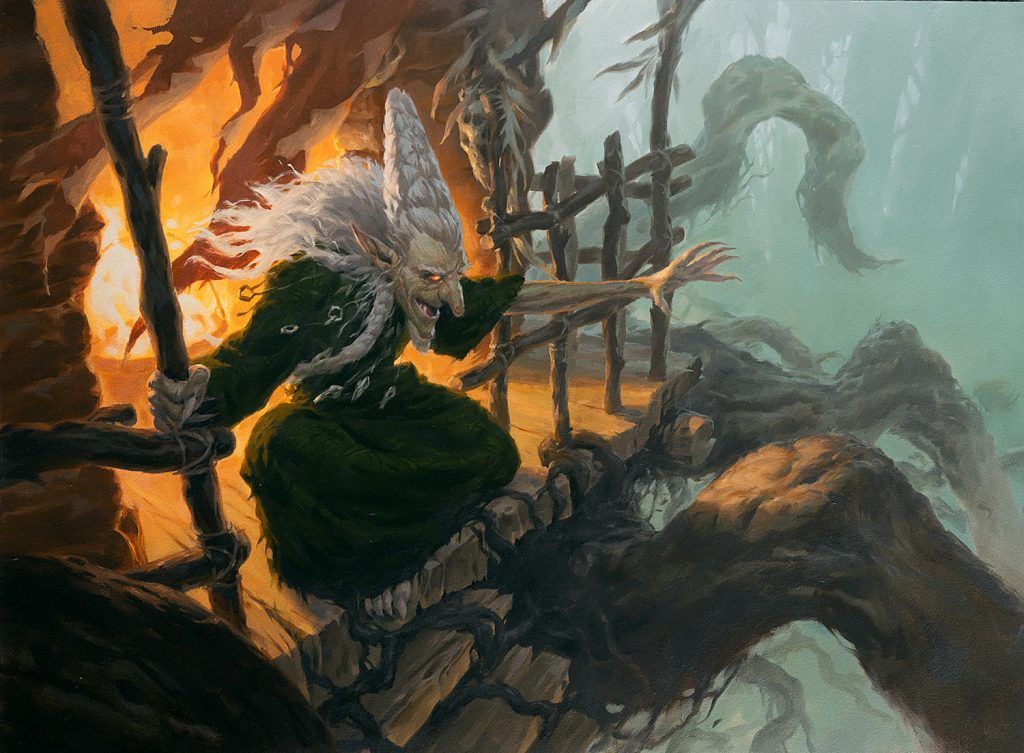
Baba Lysaga, Night Witch | Illustration by Slawomir Maniak
Commander (1)
Battle (2)
Invasion or Ikoria
Invasion of Zendikar
Creature (20)
Destiny Spinner
Gala Greeters
Herald of the Pantheon
Sanctum Weaver
Shigeki, Jukai Visionary
Tymaret, Chosen from Death
Weaver of Harmony
Courser of Kruphix
Dryad of the Ilysian Grove
Glissa Sunslayer
Gloomshrieker
Nyx Weaver
Old Rutstein
Setessan Champion
Silversmote Ghoul
Tireless Provisioner
Eidolon of Blossoms
Doomwake Giant
Necron Deathmark
Perennial Behemoth
Instant (2)
Legolas's Quick Reflexes
Season of Renewal
Sorcery (2)
Enchantment (23)
Omen of the Dead
Rancor
Utopia Sprawl
Warlock Class
Azusa's Many Journeys
Druid Class
Ordeal of Nylea
Teachings of the Kirin
Welcome to Sweettooth
Braids' Frightful Return
Elspeth's Nightmare
Jugan Defends the Temple
Omen of the Hunt
The First Iroan Games
The Weatherseed Treaty
Tymaret Calls the Dead
Binding the Old Gods
Oath of the Grey Host
Phyrexian Scriptures
The Long Reach of Night
Dictate of Erebos
The Cruelty of Gix
The Eldest Reborn
Planeswalker (4)
Tyvar, Jubilant Brawler
Vraska, Golgari Queen
Lolth, Spider Queen
Wrenn and Seven
Artifact (10)
Nihil Spellbomb
Sol Ring
Wayfarer's Bauble
Arcane Signet
Golgari Signet
Lightning Greaves
Liquimetal Torque
Thought Vessel
Thousand-Year Exilir
Solemn Simulacrum
Land (36)
Command Tower
Darksteel Citadel
Drownyard Temple
Mishra's Factory
Mishra's Foundry
Myriad Landscape
Reliquary Tower
Strip Mine
Temple of the False God
Bojuka Bog
Swamp x7
Vault of Whispers
Forest x7
Khalni Garden
Lair of the Hydra
Darkmoss Bridge
Deathcap Glade
Golgari Rot Farm
Hissing Quagmire
Restless Cottage
Temple of Malady
Twilight Mire
Underground Mortuary
Woodland Cemetery
The Commander decklist I’m sharing here is a personal favorite of mine, designed for very casual tables. It’s neither optimized nor mind-blowingly powerful, but it’s also one of the decks I’ve enjoyed piloting the most in my Magic career. The decklist is the exact 99 I currently play with, and there’s definitely room for improvement if you want to customize it.
The whole concept revolves around an interaction between its Golgari commander, Baba Lysaga, Night Witch, and the way sagas resolve. When a saga’s last ability goes on the stack, the saga actually sits in play until that ability resolves. This gives you an opening to use Baba Lysaga to sacrifice that saga along with a few other permanents to refill your hand and nug your opponents, and you still get the saga’s chapter ability when it resolves. Better yet, tons of sagas like Welcome to Sweettooth and The First Iroan Games produce the other permanent types you need for a fully-charged Baba Lysaga activation.
I can’t get into a full deck tech here, but there are some other cool interactions in this deck. An artifact land like Mishra's Factory can account for all three card types for Baba, and Liquimetal Torque can metallicize something else to make it an artifact. This is essentially an enchantress deck with an emphasis on sagas that I simply enjoy playing, and it produces a lot of material on board. It’s short on interaction, but usually finishes up with gigantic land creatures from Druid Class or Wrenn and Seven. You even get to play some sweet planeswalkers and battles because they interact with the commander profitably.
All this, of course, is negligible compared to the fact that the commander’s name is literally Baba LySAGA! It’s right there, folks!
And So, Our Tale Comes to An End
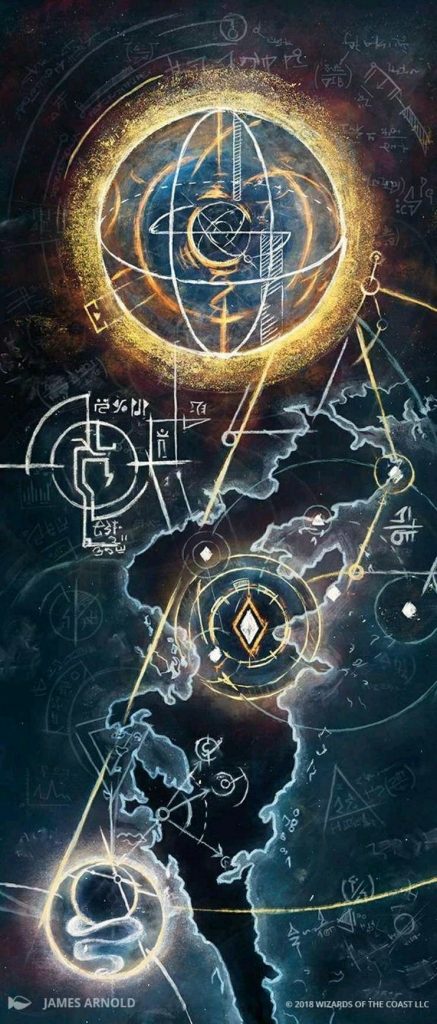
The Mirari Conjecture | Illustration by James Arnold
I guess that’s the final chapter then, so let’s wrap up with a short epilogue. Sagas, simply put, are sweet. They were a slam dunk when they hit the scene, and they’ve been reworked and adjusted in so many sets since. Wizards has a tendency of taking something that’s popular and doing it to death (Panharmonicon effects, anyone?), but I think they’ve hit the right note with sagas. I don’t want to see them in every set, since they’re mechanically complex, but they’ve added so much depth to formats like Kamigawa: Neon Dynasty and Wilds of Eldraine, while also being the perfect middleground pieces between actual cards and Magic’s lore. Also, can we take a moment to appreciate just how awesome some of the art is on these cards?
My vote: Keep the sagas coming! But how do you feel about that? Are they overused? Underused, perhaps? Maybe even, dare I say, just right? Bring this story to a close and let me know in the Draftsim Discord or on Twitter/X!
As always, thanks for making Draftsim your #1 stop for all things Magic!
Follow Draftsim for awesome articles and set updates: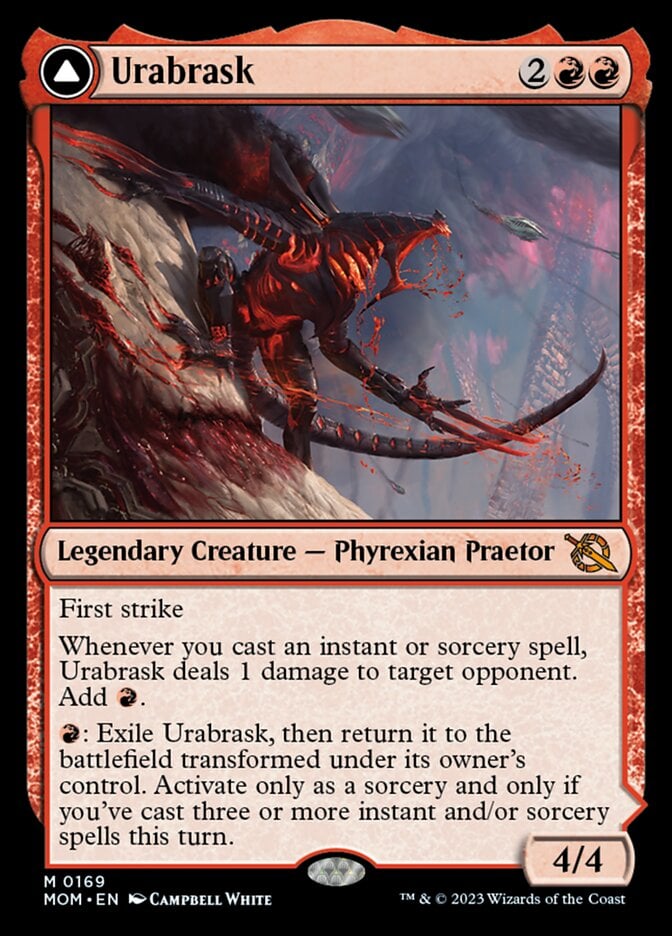

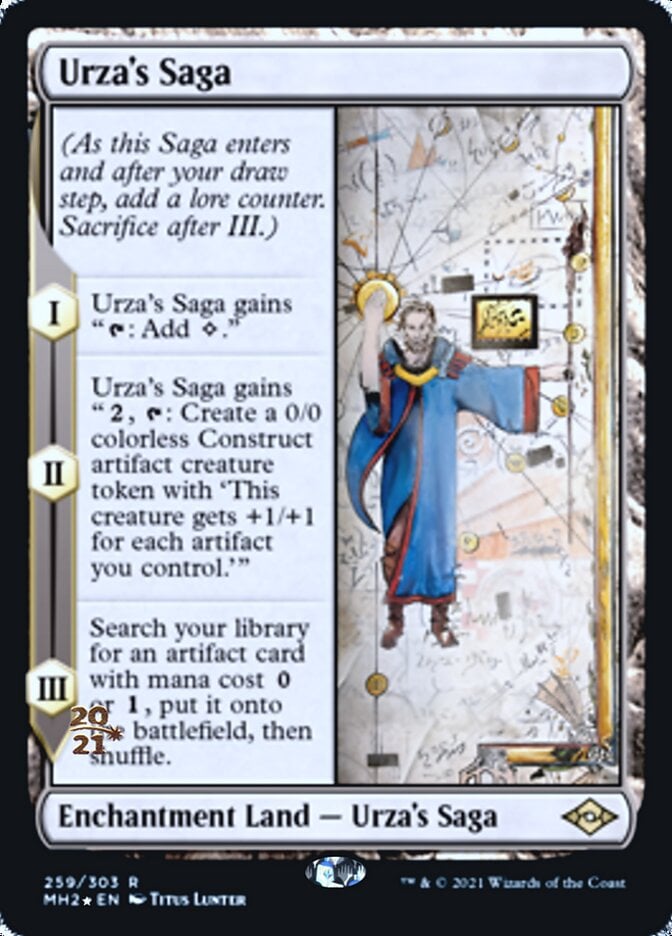
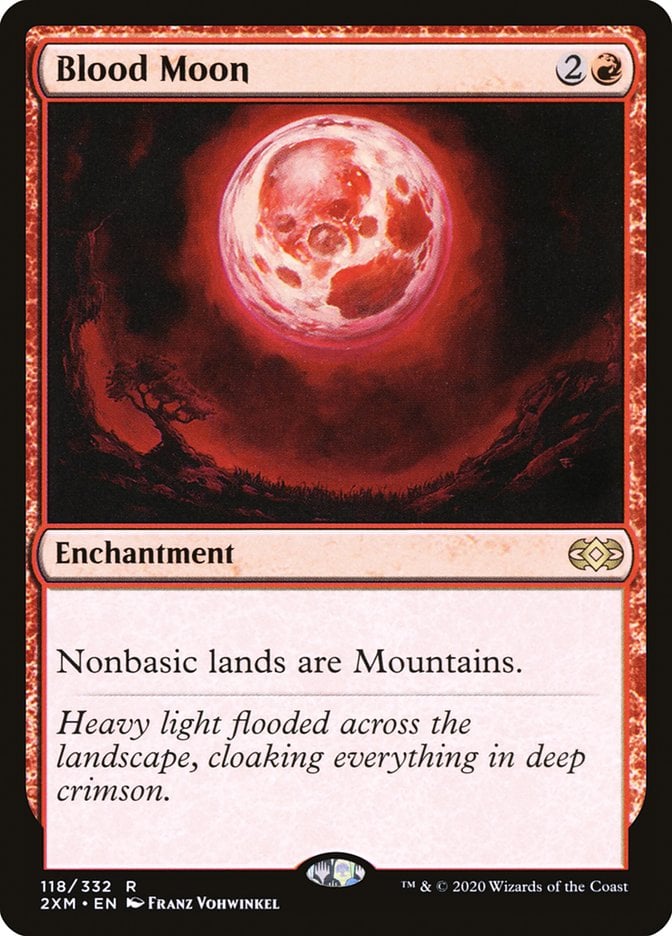

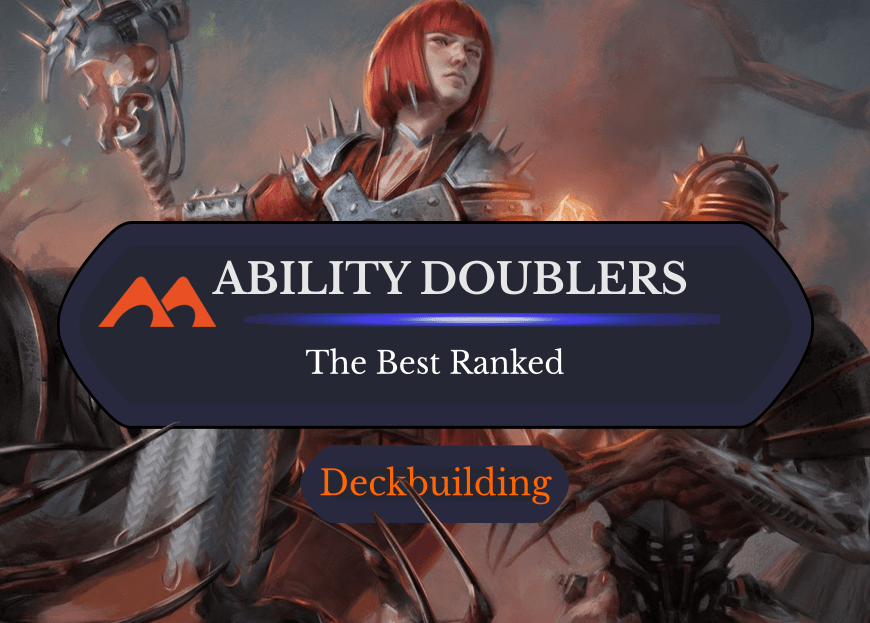
Add Comment